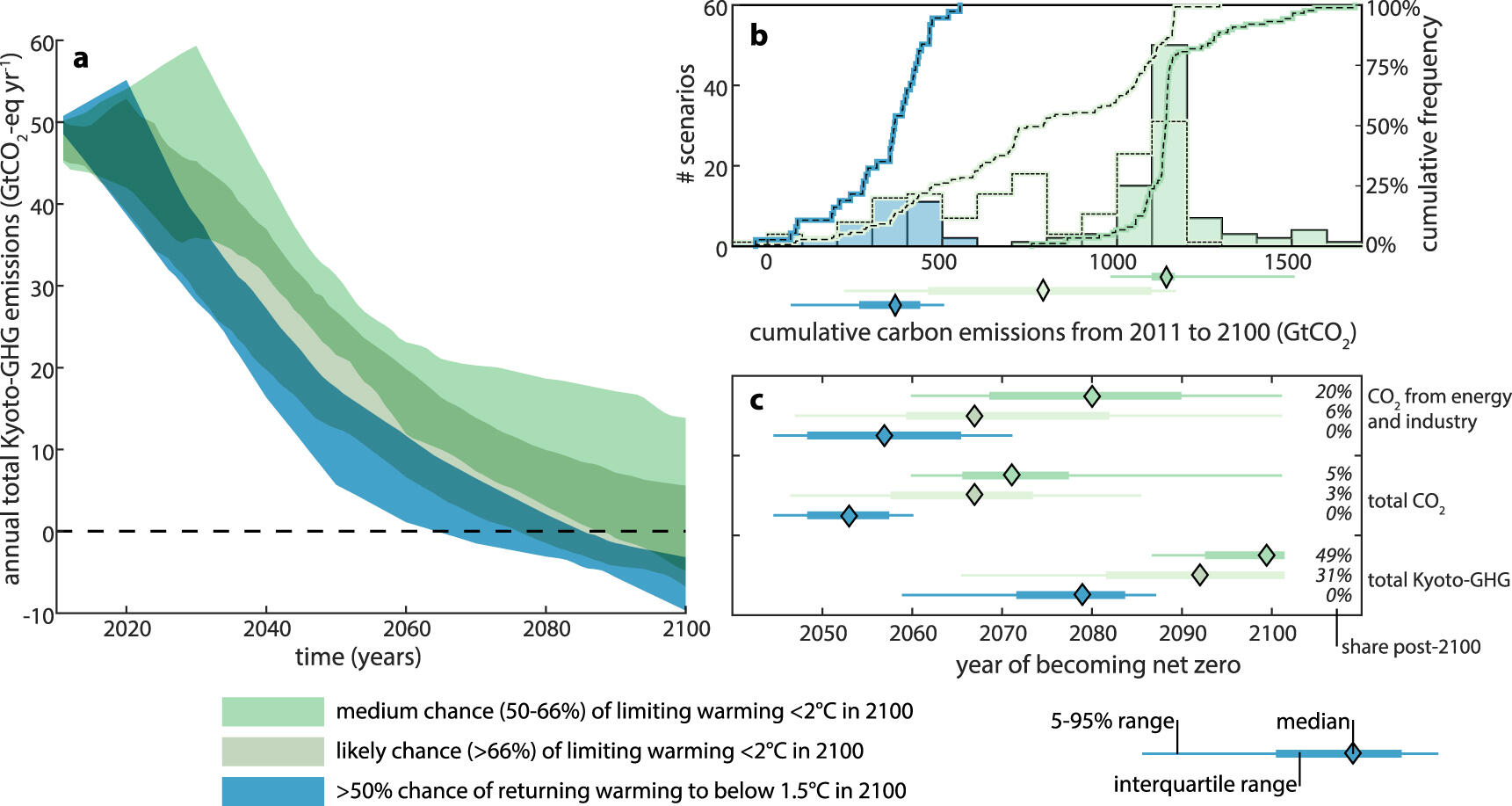Zero emission targets as long-term global goals for climate protection

Authors: Joeri Rogelj, Michiel Schaeffer, Malte Meinshausen, Reto Knutti, Joseph Alcamo, Keywan Riahi, and William Hare
Abstract: Recently, assessments have robustly linked stabilization of global-mean temperature rise to the necessity of limiting the total amount of emitted carbon-dioxide (CO2). Halting global warming thus requires virtually zero annual CO2 emissions at some point. Policymakers have now incorporated this concept in the negotiating text for a new global climate agreement, but confusion remains about concepts like carbon neutrality, climate neutrality, full decarbonization, and net zero carbon or net zero greenhouse gas (GHG) emissions. Here we clarify these concepts, discuss their appropriateness to serve as a long-term global benchmark for achieving temperature targets, and provide a detailed quantification. We find that with current pledges and for a likely (>66%) chance of staying below 2 °C, the scenario literature suggests net zero CO2 emissions between 2060 and 2070, with net negative CO2 emissions thereafter. Because of residual non-CO2 emissions, net zero is always reached later for total GHG emissions than for CO2. Net zero emissions targets are a useful focal point for policy, linking a global temperature target and socio-economic pathways to a necessary long-term limit on cumulative CO2 emissions.
Link to full article: http://iopscience.iop.org/article/10.1088/1748-9326/10/10/105007
Citation: Joeri, R., S. Michiel, M. Malte, K. Reto, A. Joseph, R. Keywan and H. William (2015). "Zero emission targets as long-term global goals for climate protection." Environmental Research Letters 10(10): 105007.